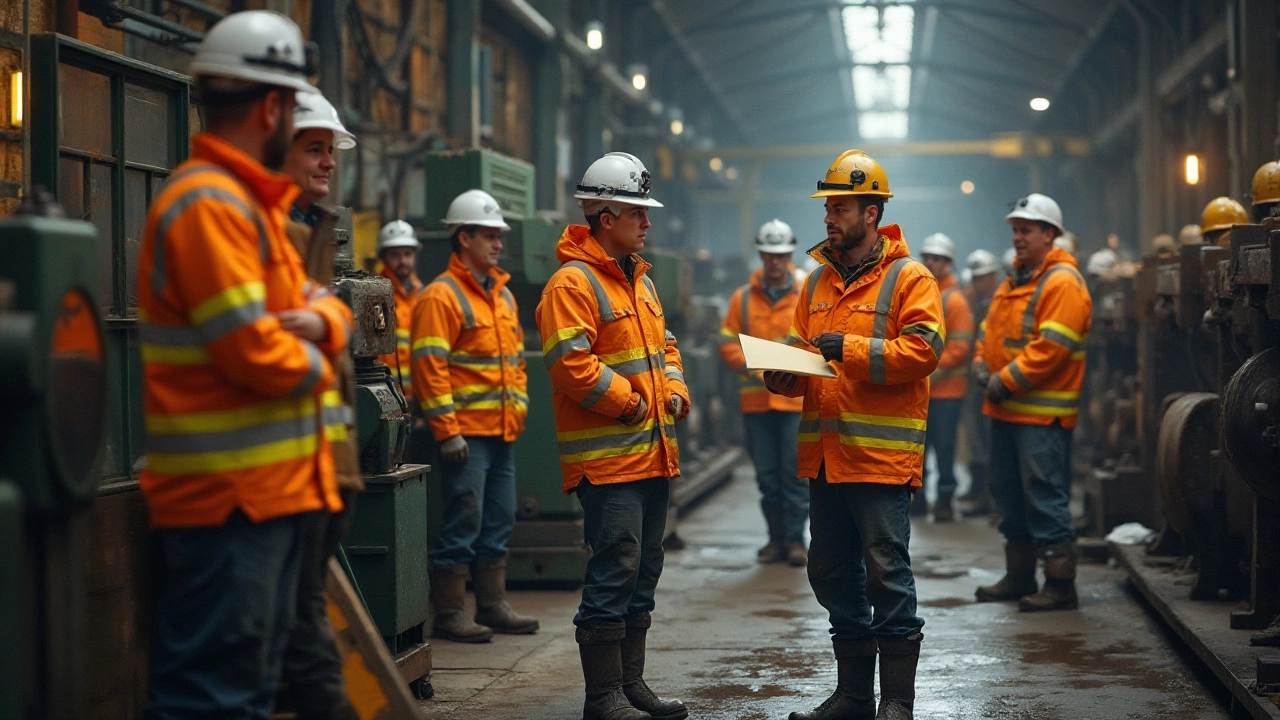Safety Footwear: What You Need to Know Before You Buy
When you’re on a construction site, in a factory, or even stocking shelves, the right shoes can be the difference between a comfortable shift and a painful injury. Safety footwear isn’t just a box‑ticked requirement – it’s built to protect your toes, your ankles, and even keep you steady on oily floors. In this guide we’ll break down the must‑have features, how to pick the perfect fit, and simple ways to keep your shoes lasting longer.
Key Features to Look For
First up, toe protection. Most safety shoes come with a steel toe or a composite toe that meets EN ISO 20345 standards. Steel toes are tough and cheap, while composite toes are lighter and don’t set off metal detectors. Next, think about the sole. Slip‑resistant outsoles are a must if you work on wet or oily surfaces – look for a ‘SR’ rating on the label. If you’re around electricity, grab shoes marked ‘EH’ for electrical hazard protection. Waterproof membranes keep your feet dry in rain or puddles, and breathable linings stop your feet from feeling like a sauna after a long shift.
How to Choose and Care for Your Safety Shoes
Fit matters more than any brand name. Slip off your socks, slide your foot in, and make sure you can wiggle your toes. Walk around the store – you should feel snug but not cramped. If you wear orthotics, bring them with you; many safety boots have removable insoles that accommodate custom inserts. After you’ve bought a pair, keep them clean. A quick brush off after each day removes grit that can wear the sole down. For tougher stains, a damp cloth with mild soap works fine – avoid soaking the shoes unless they’re fully waterproof. Store them in a cool, dry place and let them air‑dry if they get wet; heat can warp the protective toe caps.
Replacing safety footwear at the right time is just as important as buying the right pair. Most manufacturers recommend swapping out shoes after 12‑18 months of heavy use, or when the sole’s tread wears down to the indicated wear line. If you notice cracks in the toe cap or the upper material feeling loose, it’s time for a new pair. Keeping a spare pair in your locker can save you a scramble if your primary shoes get damaged mid‑shift.
At JR Wax & Tune Clothing Specialists we stock a range of safety shoes that tick all the boxes – steel toe, slip‑resistant, waterproof, and comfortable. Our staff can help you try on different styles, check the fit, and give you tips on maintaining them. Whether you need a rugged boot for outdoor construction or a lightweight trainer for warehouse work, we’ve got options that meet UK safety standards without breaking the bank.
Bottom line: good safety footwear protects you, boosts confidence, and can even improve productivity. Choose a pair that fits well, has the right safety ratings for your job, and treat them right so they last. Ready to upgrade your work shoes? Drop by JR Wax & Tune and let us set you up with the perfect pair.
-
Can Employers Mandate Steel-Toe Shoes at Work?
Steel-toe shoes are often a necessity in many workplaces aimed at protecting employees' feet from potential hazards and accidents. This article explores the legalities surrounding whether an employer can require their employees to wear these protective shoes. It delves into safety regulations, reasons behind such mandates, and the possible implications for both employees and employers. Readers will gain insights into balancing safety requirements with personal comfort.
